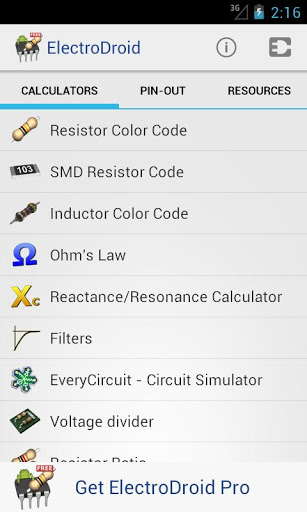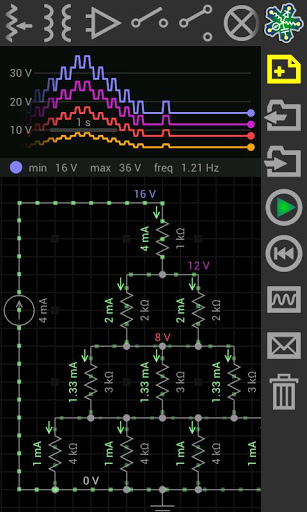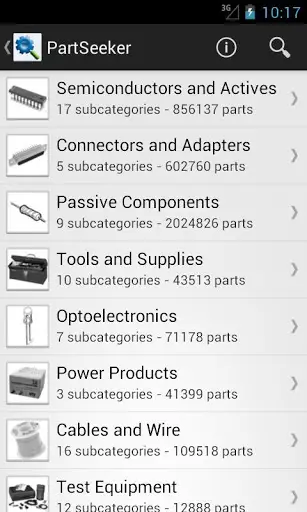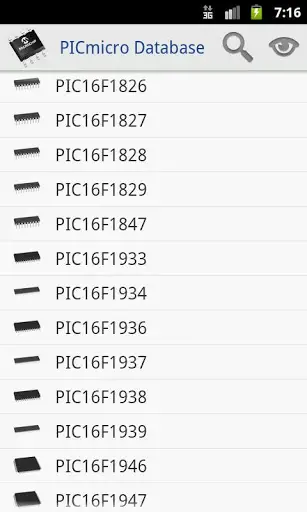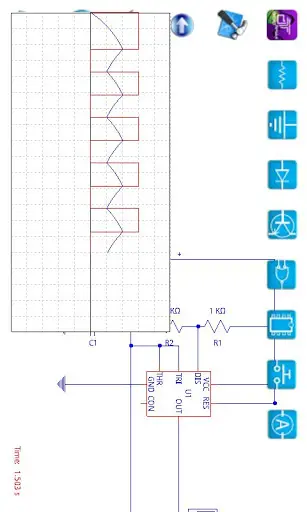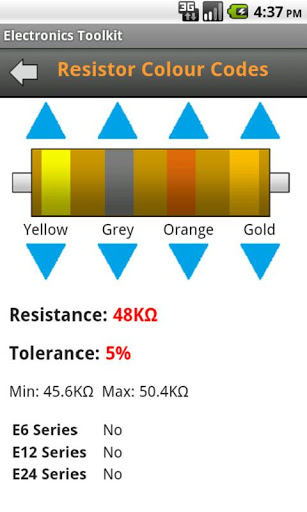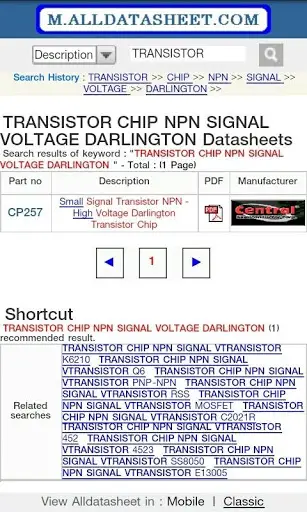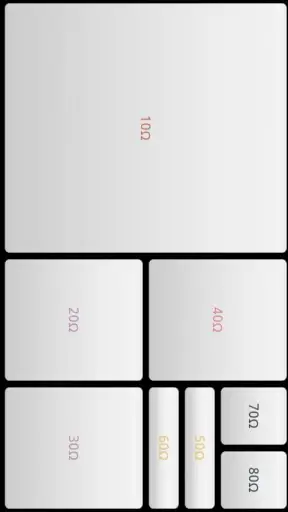The world around us is changing at a
much faster pace than any one can anticipate. The world of “computing”
has already seen great shifts from Desktops to Notebooks to Smartphones
and Tablets. The coming decade will be more focused on mobile computing
and cloud computing. Here in this article, I am listing some of the best
and really useful applications released in Android market (aka Google Play), that comes handy for any one who is working in Electrical and Electronics industries/professions.
ElectroDroid
– is the most popular and useful application in Android market for an
electronics engineer. This app is a collection of many simple and useful
tools like Resistor color code calculator, Filter value calculator,
Inductor color code calculator, SMD resistor code calculator, LED
resistor calculator etc. The App also has a great collection of pin out
diagrams of USB port, Parallel port, Ethernet port, VGA connector,
Firewire connector etc and other resources and references which lists
PIC micro controller database, ISP specs of AVR and PIC, Circuit schematic symbol reference,
ASCII table references, Battery references etc. This application has
been downloaded by more than 10,000,00 smart phone devices and has been
rated by more than 30,000 users. If you are looking for a much better
version of the app without ads, you can buy it from the Google Play
store (Electrodroid Pro) for less than 3 USD.
EveryCircuit -
is a simple and beautiful application for android which helps you to
build and simulate circuit ideas. It has a really good & simple user
interface which begins with a workspace where you can start building
your circuits. You can add your components like resistors, capacitors,
inductors, power sources, signal sources etc and wire them together to
complete the circuit. You can alter the values of each and every
component and then finally Run/Simulate them. You will see the current
flow, input and output waveforms graphically represented etc when you
run the circuit you have built. You can alter the component values in
real time and see the changes in output instantly. Additionally the app
developers have provided a set of built in circuit applications like
inverting amplifier, rectifier circuits, voltage regulator etc which the
user can simulate instantly to learn the working of these circuits. The
attractive feature is the graphical representation (animation) of the
electron flow, input and output signals which helps the user to
understand the circuit functioning within no time. Their free version
doesn’t have a large work space area, which limits the number of
components you can play with. They also have limited their component
library in their free application. I think they have deliberately done
this to promote their paid application – EveryCircuit Premium – which they sell for around 10 USD. They have sold more than 10,000 apps in Play store, which shows people are quiet interested in their app. I suggest you try their Free app first and if you like it, go ahead and buy the premium version.
PartSeeker
– is an app for searching electronic parts and components.
Unfortunately this app is a paid one and the good side is that you can
buy it for less than 2 USD. This app is made and
released by the same company (IERO) which made ElectroDroid (see above)
app. IERO has made this app by using the extensive component library of Octopart
(the electronic component search engine). This app comes handy while
you are away travelling and is keen to search for a component using your
mobile device (may be smart phone or a tab!).
PIC Microdatabase -
another free app from IERO, which integrates well with ElectroDroid
app. This app is nothing more than a database of PIC micro controllers
manufactured by Microchip. This app lists all PIC and dsPIC family of
controllers in an easy to use user interface. Features and
specifications of all controllers along with pinout diagrams of select
ones are available. The most attractive feature is a search
functionality in which you can search for a controller with particular
features you would like to have.As an example you can search for
controller from PIC that belongs to a particular PIC family like PIC 10,
with specific EPROM values, specific RAM, USB 2.0 or higher, specific
internal oscillator values etc. The app will output all PIC controllers
that matches your search criterias. So far more than 10,0000 users have
downloaded this application.
DroidTesla
– is another free app for simulating electronic circuits. This SPICE
simulation tool is quiet similar to the app “EveryCircuit” mentioned
above in its functionality - means you can build and simulate a circuit.
But they both (EveryCircuit and DroidTesla) differ in user interface
and features provided. I found the free version of “EveryCircuit” much
more appealing than DroidTesla. EveryCircuit has certain predefined
circuits like halfwave rectifier, inverting amplifier etc which you can
simply load to workspace and simulate in realtime. DroidTesla has given a
list of examples in their free app version but none of them loads
properly to workspace. The reason is most of the example circuits
contain a particular component which may be available only on DroidTesla’s commercial version.
User interface of EveryCircuit is much better than that of DroidTesla.
DroidTesla’s commercial version might be much better than EveryCircuits
premium version, as DroidTesla has large set of component library to
choose from. DroidTesla will definitely outshine EveryCircuit – if the
number of component libraries available is taken into account. Both of
the apps commercial versions are priced competitively. If “user
interface” is your primary preference, I will recommend EveryCircuit
premium. On the other hand, if number of component library is your first
preference, I shall recommend DroidTesla commercial version
ElectronicsToolKit
– is another free app which is a collection of simple tools like
resistor color code calculator, series and parallel calculator etc.
Almost all those tools are available in ElectroDroid app too, except for
a Power Triangle calculator. I have listed this app here as it is free
(and I have spent some time to download and test this app in my Galaxy)
and you guys can try out, if you have time.More than 10,000 users have
tried this application.
AllDataSheet App
– This app is free version of the Datasheet website Alldatasheet.com.
This app is nothing more than a book mark to alldatasheet website’s
mobile version. I dont recommend you to download this app as your
purpose will be served by visiting Alldatasheet.com from your mobile
browser (which will get automatically redirected to mobile version)
EquivalentResistanceSolver
– is another free app which helps you to calculate the equivalent
resistance of a circuit. This app may not be that useful for a
professional as the “user interface” is average. It takes lots of time
to build a “Series-Parallel” combination. Might be handy for students
who are learning about the concepts for the first time.
RF Pad Calculator – is a free app that helps to calculate the resistor values required to build an RF attenuator.
AmpliCalc - is a simple and free app to calculate inverting and non inverting operational amplifier values.
FilterCalc
– is another free app from the same developer of Amplicalc, which helps
to realize filter design by finding the appropriate values.
ControlCalc
– is yet another free app from the same developer of Amplicalc, which
helps in simulating closed and open systems, calculate
transfer functions, state response & you can save the output as
PNG.
M32 Assembly
– is another interesting application which helps you to learn assembly
language by yourself. This app infact is a simulator for the M32
processor.
Electronica
– is another app which is open source (the source code of this app is
available for free download). This app is also a collection of simple
and easy to use tools that comes handy for an every day electronics
enthusiast/professional or even a student.
There are a handful of other free
android applications like Ohms Law calculator, 555 Timer Calculator
which I have not mentioned here. The reason is simple, most of the “electronics tools“
apps like ElectroDroid, Electronica, ElectronicsToolsKit etc has Ohms
Law calculation, Resistor Colourcode calculation and 555 Timer
calculator embedded in them!

